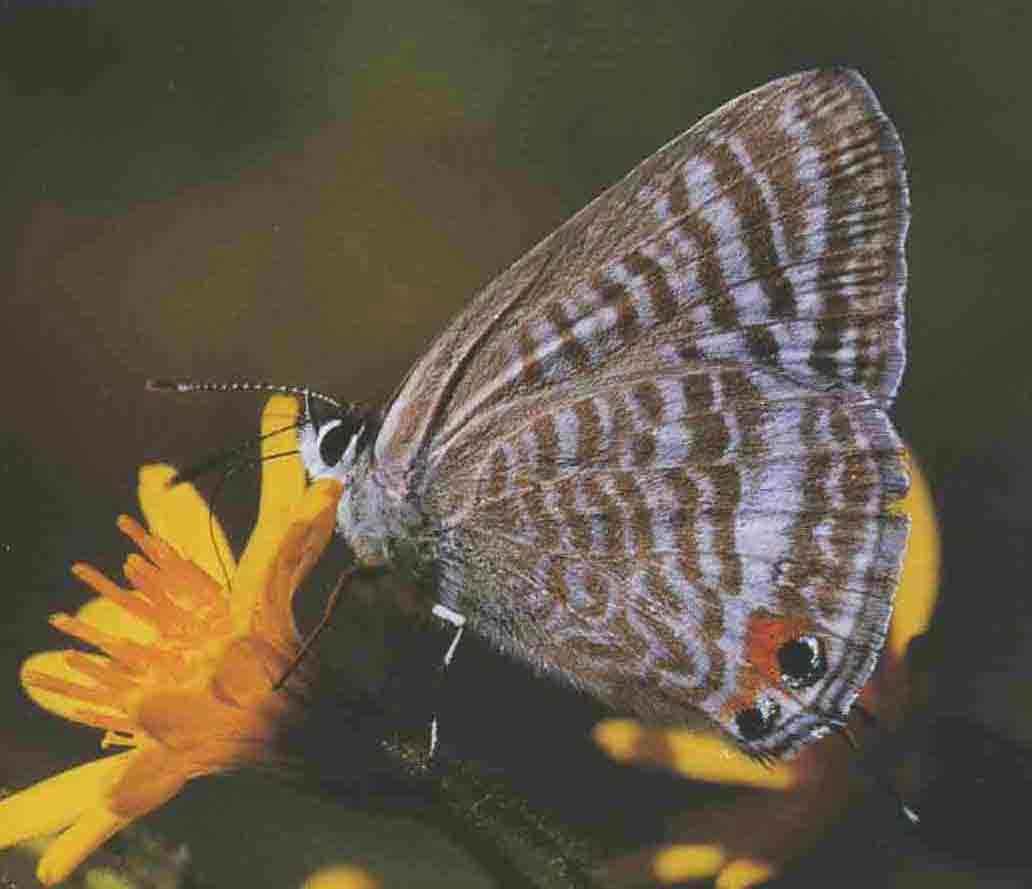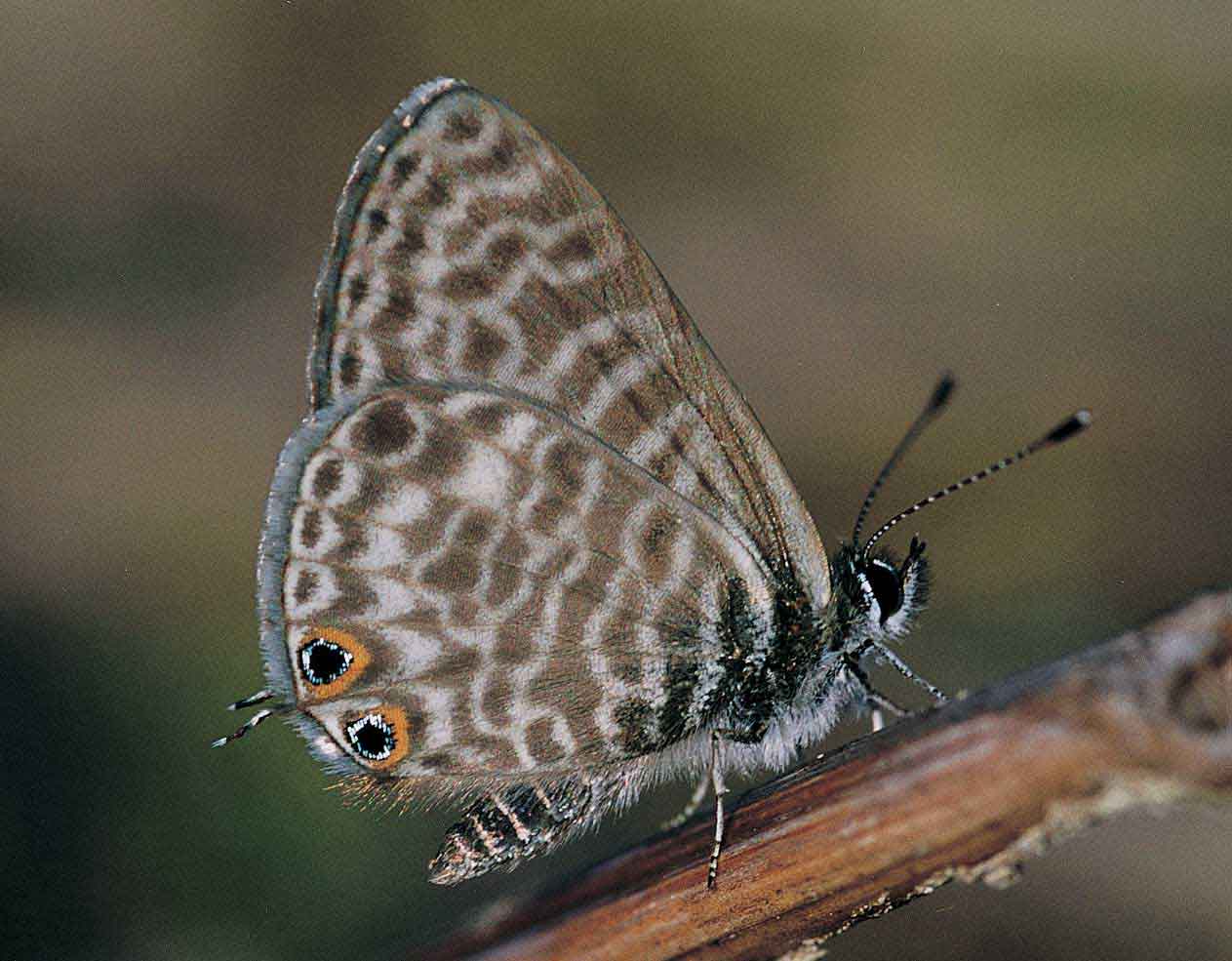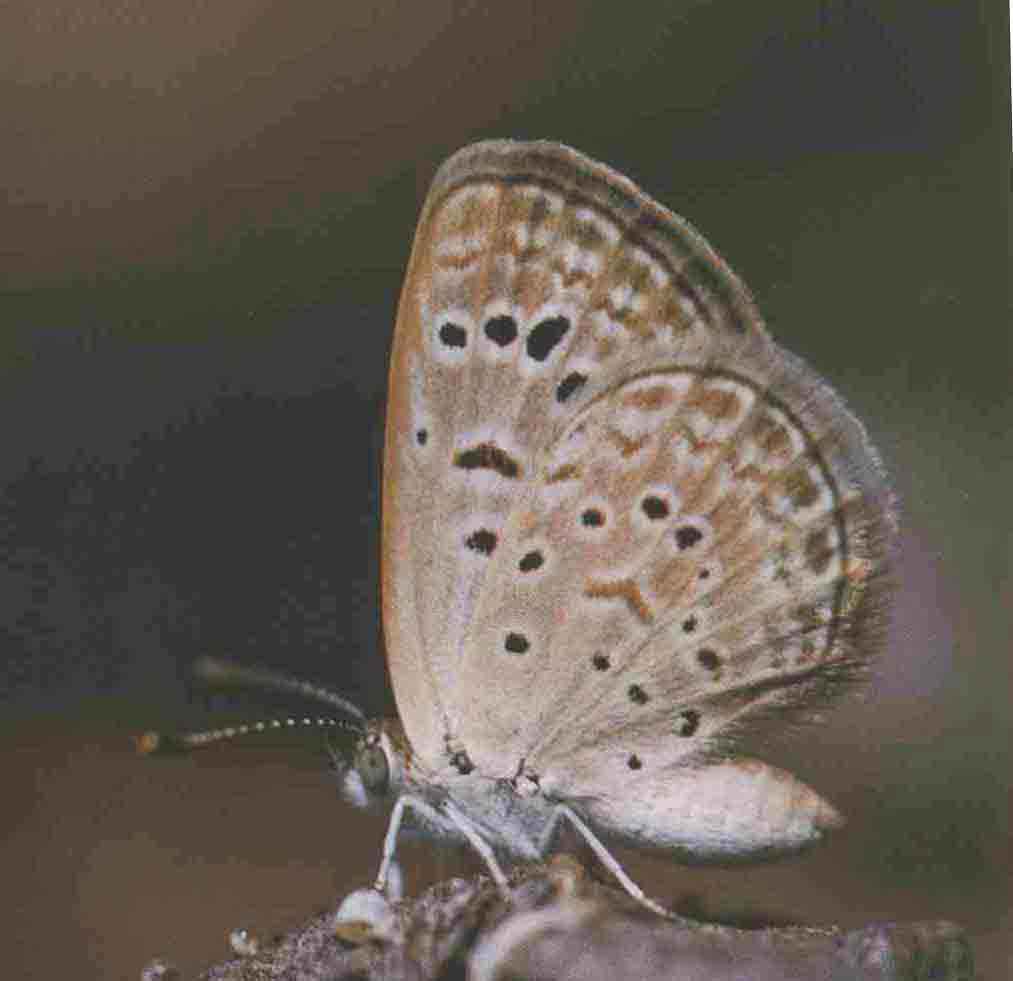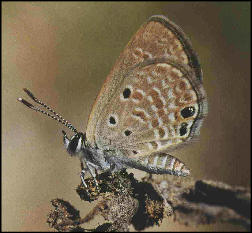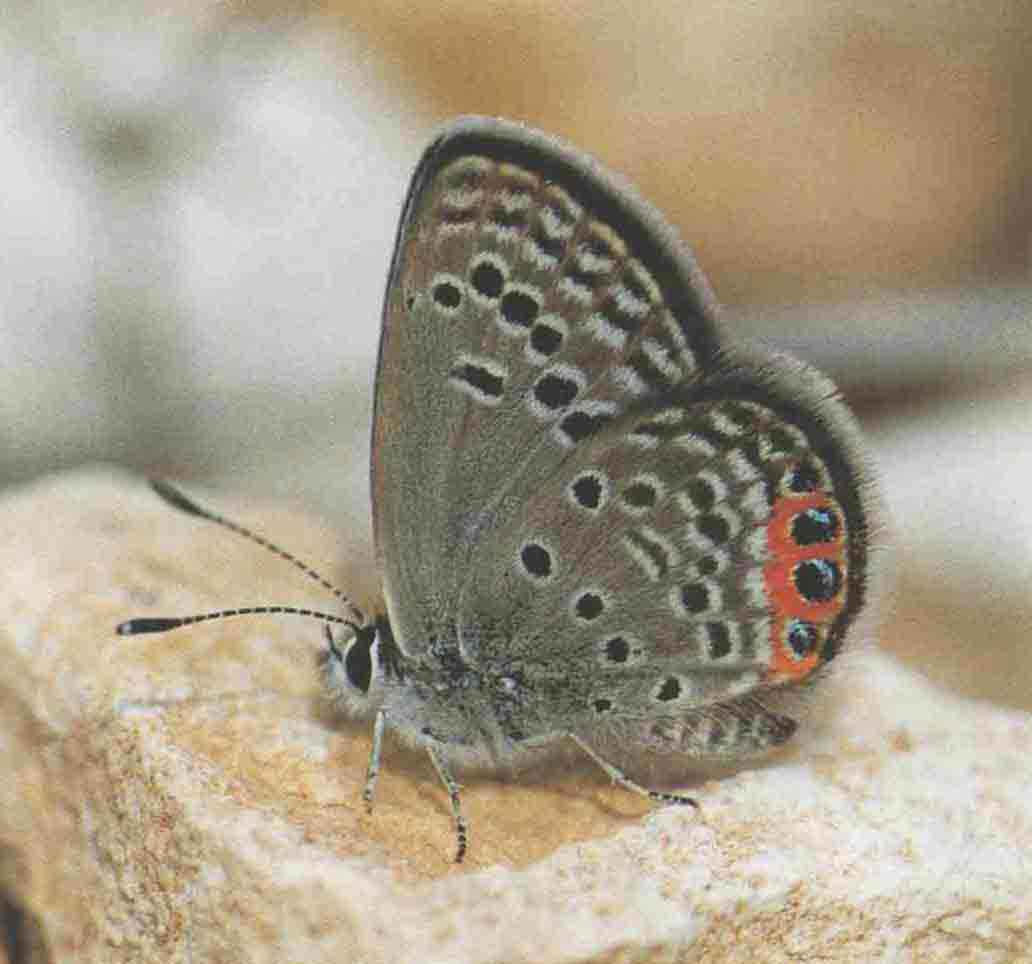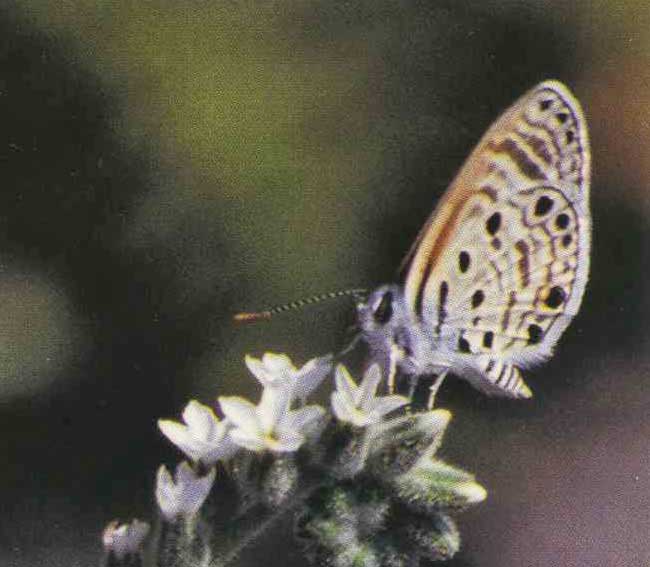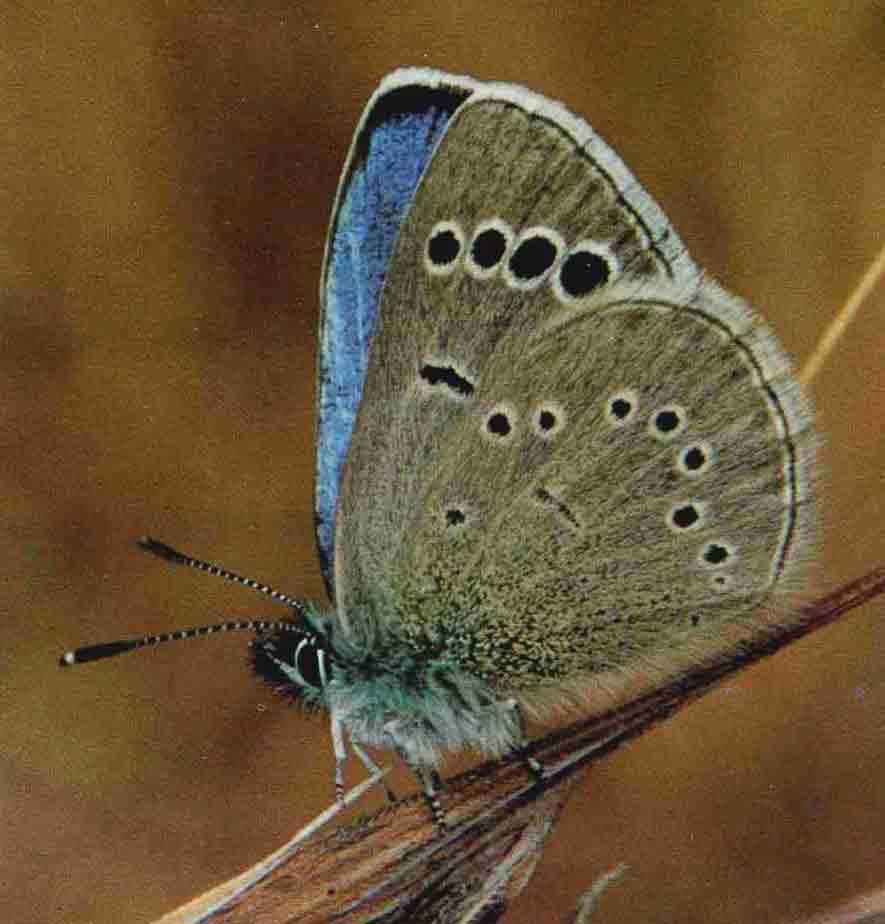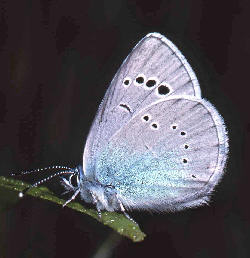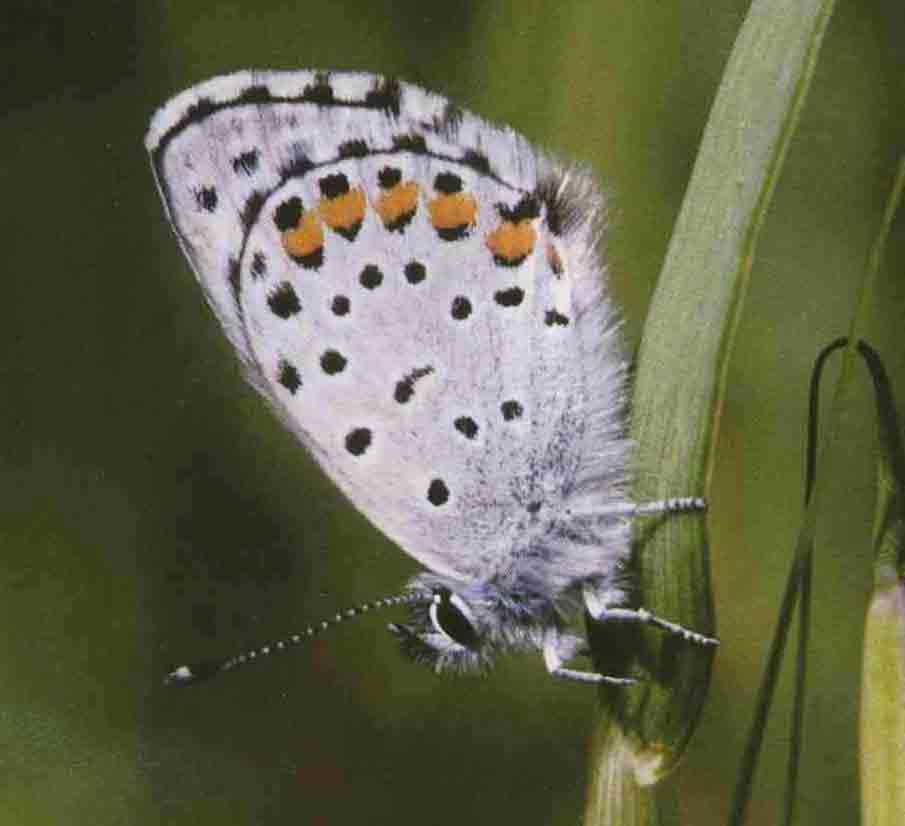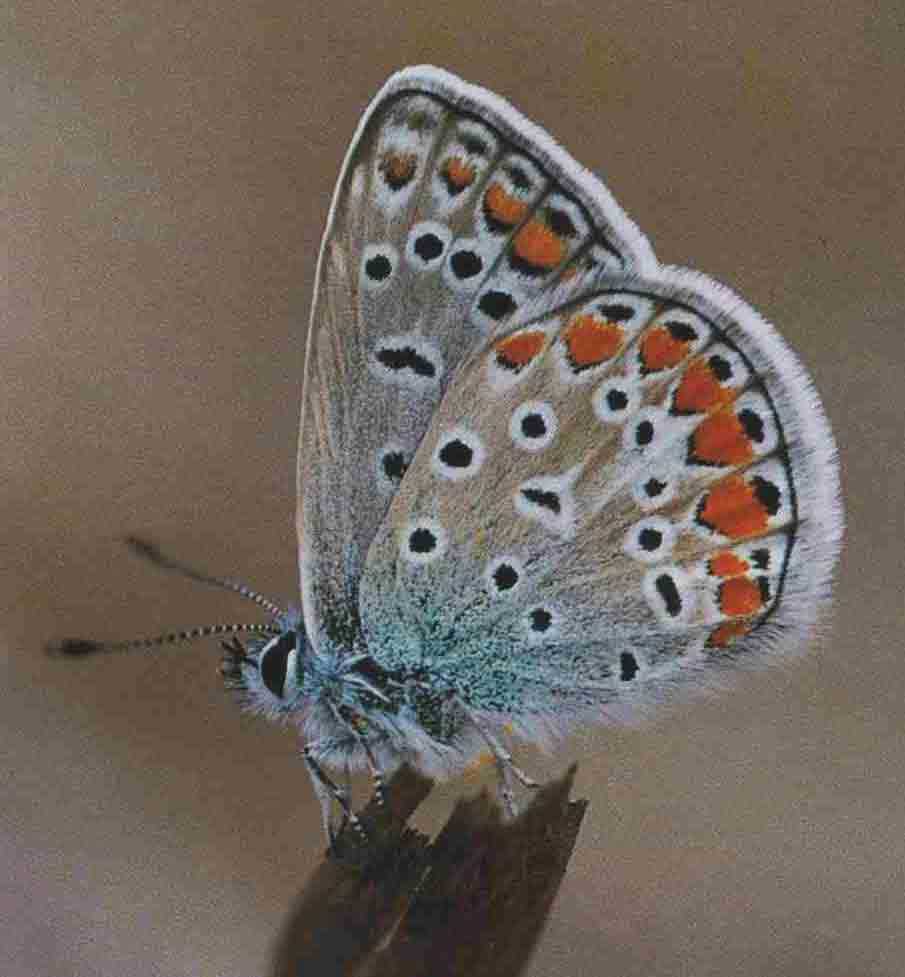

|
|
|
|

|
|
|
|
|
|
|
Distinguishing characters of the ‘blues’ found in Cyprus (see previous page for Aricia agestis and Polyommatus icarus) |
|
Lampides boeticus and Leptotes pirithous often appear very similar in flight, especially if worn. If specimens are large, they are most likely to be L. boeticus, but this species does vary in size, especially in hot climates such as in Cyprus, so do not rely for identification on this character alone. A reliable differentiating feature is the broad white band on the hindwing underside of L. boeticus, whereas L. pirithous looks more evenly mottled (see photographs on left). However, the flight of both species is so rapid that identification should be confirmed when the butterfly is at rest. |
|
Long-tailed Blue Blue (Lampides boeticus) female, © Christodoulos Makris |
|
Lang’s Short-tailed Blue (Leptotes pirithous) |
|
Paphos Blue, (Glaucopsyche paphos), male, |
|
Small Desert Blue (Chilades galba) |
|
African Grass Blue (Zizeeria karsandra) |
|
Eastern Baton Blue (Pseudophilotes vicrama) |
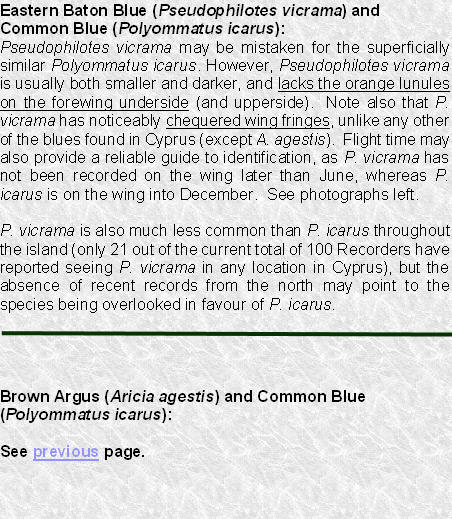
|
African Grass Blue (Zizeeria karsandra), Small Desert Blue (Chilades galba) and Grass Jewel (Chilades trochylus): |
|
The non-tailed blues Zizeeria karsandra and Chilades galba occasionally fly together, and can be difficult to separate unless viewed very closely, when separation is easy. In addition to the comments given on Page 3.5, note that Zizeeria karsandra has very noticeable black spots on the undersides of both fore- and hindwings, which are completely absent from the forewing of Chilades galba. Note also that C. galba has very distinctive marginal spots, not found in Z. karsandra. |
|
Paphos Blue (Glaucopsyche paphos) and |
|
Glaucopsyche alexis, though very common in other islands of the Mediterranean, is NOT found in Cyprus. The representative of this genus present on the island is the superficially similar endemic Glaucopsyche paphos - see photograph left. |
|
C. trochylus has four, black, submarginal ocelli with silvery-blue highlights, on both surfaces of the the hindwings, all surrounded by bright orange, thereby easily distinguishing it from the two previously mentioned blues. See additional photographs on Page 3.5. |
|
Grass Jewel (Chilades trochylus) |
|
Green-underside Blue, (Glaucopsyche alexis), male, Aghios Geordios, CORFU, June 1987. |
|
Common Blue (Polyommatus icarus) |
|
African Babul Blue (Azanus jesous) photographed in Israel |
|
African Babul Blue (Azanus jesous) |
|
This species is an extreme rarity in Cyprus, not having been found since 1940. However, I include it because the species is a known migrant, reported from northern Lebanon (Butterflies of Lebanon, 1974. T. B. Larsen), so could again be found in Cyprus. It is also present in Israel and the Arabian Peninsula. A. jesous is very similar to (though larger than) the Small Desert Blue (Chilades galba) above left, but note the presence of small black spots on the underside forewing and also the more numerous black marginal spots on the underside hindwing of A. jesous. In Lebanon, the species flies in company with C. galba (Larsen, 1974), so, were it to be found again in Cyprus, it could be expected in localities where Prosopis farcta (recorded as the larval hostplants of both species) is found. |
